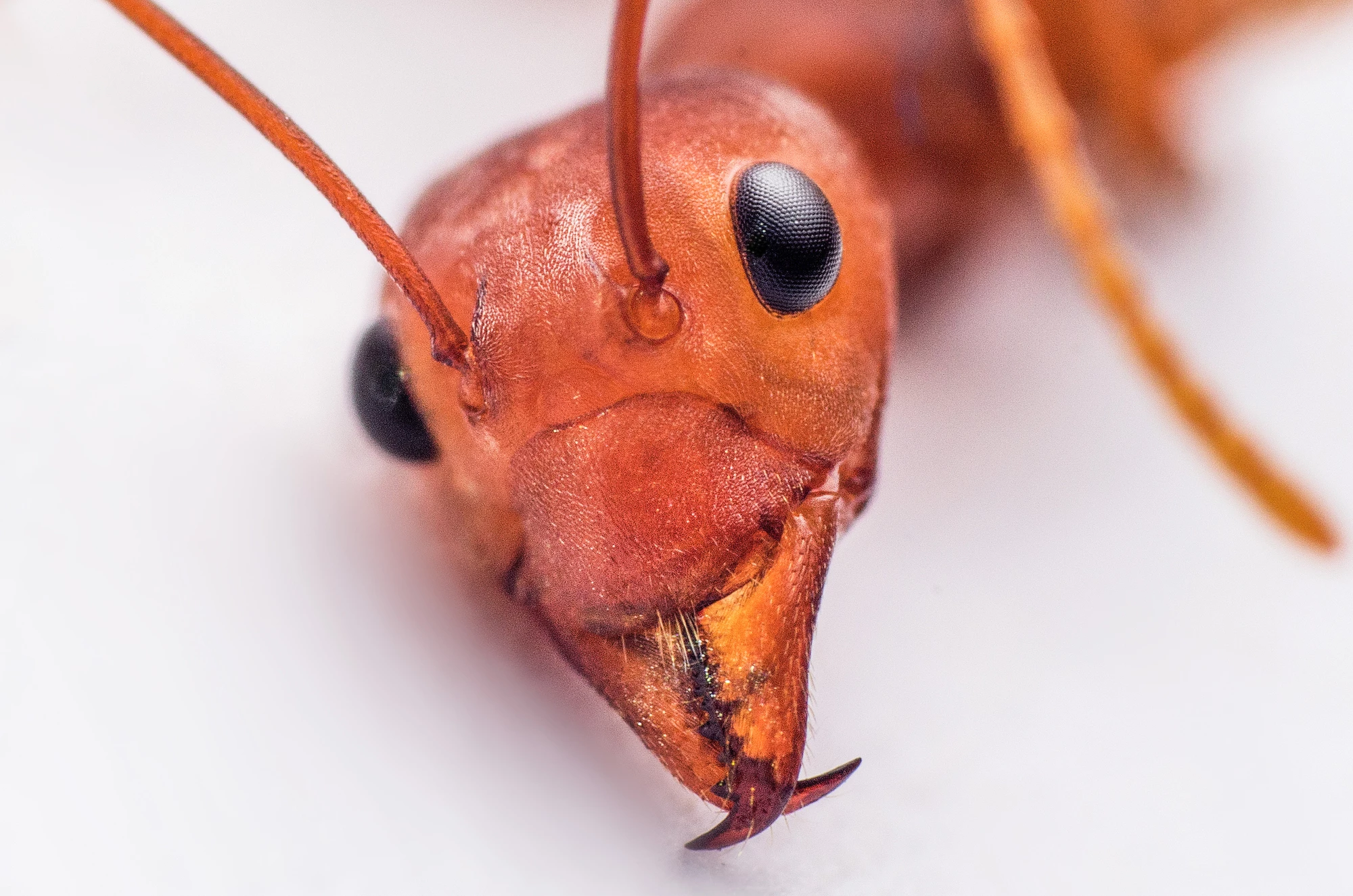Why do ants and other small creatures have such sharp bites? According to scientists from the University of Oregon and the Pacific Northwest National Laboratory (PNNL), the answer lies in their ability to uniformly add zinc atoms to their teeth.
If you've ever run afoul of an ant, you've probably noticed that they can give a pretty mean bite. If you're a homeowner, you may have also noticed that ants, termites, and other small arthropods have a remarkable ability to chew through wood and a surprising variety of other materials.
This is odd because the jaws and teeth of such creatures are tough, but they shouldn't be that tough. Insect mandibles are made out of a combination of proteins and the polysaccharide polymer chitin, which is cross-linked by hydrogen bonds to produce chitin microfibrils. Chitin is tough, and when mixed with other materials like calcium carbonate forms even tougher materials, such as in the shells of lobsters and crabs.
One significant example of this is that when eight percent of zinc is incorporated, the chitin becomes hard enough and tough enough to make very sharp, carefully detailed structures like ant teeth extremely durable.
Under Robert Schofield of the University of Oregon, a team of biophysicists has been measuring the hardness, elasticity, energy of fracture, abrasion resistance, and impact resistance of ant teeth and other microscopic animal tools to learn more about how they work and how to mimic them on a larger scale.
To achieve this, the team needed to look at ant teeth at the atomic scale, so PNNL materials scientist Arun Devaraj and doctoral intern Xiaoyue Wang applied atom probe tomography. This involves taking needle-like specimens collected with an ion beam microscope and subjecting them to lasers or high-voltages pulses to evaporate atoms from the surface to produce 3D imaging and chemical composition measurements at a scale of about a 10th of a nanometer.
With this technique, the team could map individual atoms on an ant tooth. What they found was that the zinc was uniformly distributed in the tooth instead of clustered in nano-sized nodules as they expected. This distribution allows the teeth to be much sharper, so the ant or other creature can pierce materials using only 60 percent or less force than would be required for materials similar to those in human teeth. This not only makes such structures more efficient, but could also explain why distantly related arthropods, crustaceans, worms and other creatures have evolved mandibles or similar tools.
“Human engineers might also learn from this biological trick," says Schofield. "The hardness of ant teeth, for example, increases from about the hardness of plastic to the hardness of aluminum when the zinc is added. While there are much harder engineering materials, they are often more brittle."
The research was published in Scientific Reports.
Source: PNNL





